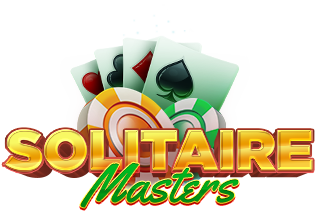Pinochle is a game that involves a lot of tactics and tricks. It can be played by a minimum of two players and a maximum of four. Here, the gamers have to put together different combinations of cards and create melds. While the rules of such a game can be easily understood and learned, Pinochle is a fast-paced pastime that comes with a lot of excitement and fun. Once the players understand the value of each card in the gameplay, they can start building their hands and score as many points as possible. They can do it not only by knowing the rules of this game but also if they can seize the momentum and play their cards correctly.
History of This Game
Overall, Pinochle originates from the Switzerland game known as binokel, which in turn evolved from the French game bezique while there's a second alternative, according to which the Pinochle card game came into existence from the South German game of binocle or binoche. Interestingly enough, the word binocle comes from the French language and means 'binoculars'. At the end of the 19th century, the Germans brought this card pastime to America, where it was mispronounced and later referred to as hpinochle'.
Rules of Pinochle Game That Players Need to Know
This game is played with only 48 cards and consists of various phases, which may vary depending on the game and comprise a dealing phase, which is followed by the bidding, exchanging, and melding. The last two stages are the trick-taking and the scoring. The best way to play Pinochle is between 4 players who will form two pairs. They will sit in directions opposite each other and the dealer will be chosen randomly in the first round. In the subsequent rounds, the dealership is passed clockwise between the players. When the game starts, each player receives 12 cards and the player who sits on the left side of the dealer will place the first bid. And so the gamers move on to the next phase, which is called the bidding. Here, each player will bid for the number of points that they think they will make at the end of the gameplay. The minimum bid that the players can make is 250 points, and the gamer who is on the left of the dealer is the first to start bids. Thus, the player can bid with 10 or 20 more points than the previous bid or he/she can also choose to pass. The last player who decides not to pass will win the bid, which means that he/she has to score as many points as mentioned in the last bid. In case all players decide to pass, then the dealer will set the minimum possible target, which is 250 points and will win the final contract. To know more, the player who wins the bid has additional privileges. He/she can declare the trump of the round as well as have the opportunity to exchange 4 cards with his/her partner. Also, another benefit is that he/she can deploy the first trick. All these comprise the phase which is called the exchanging. When it comes to exchanging the cards between partners, they are not allowed to talk with each other about which cards they want to exchange. Also, they are not obliged to switch cards between each other if they consider that this is not opportune. The next stage is called melding and means that the players must use the cards that they have in their hands to create as many melds as possible. They can form melds in three different classes. For example, a single card can be used in multiple melds. However, it can be used only once in a single meld in a certain class. The points scored in each meld are added to the team's final score obtained in the round.
Trick Taking and Scoring
The trick-taking session starts after melding. This implies that the player who was declared the winner of the auction can start the first trick. Thus, the player who wins it can lead the next trick and so on. Overall, there are 12 possible tricks that the players can initiate and the round will end when all of them have been followed. The player that leads the trick can choose to play any card he/she wants, but all the other players must follow some rules. For instance, they should play the same suit card as the lead one. In case the player cannot use such a card, he/she should play a trump. Otherwise, he/she can utilize any card that he/she wishes. All in all, if the player ends up getting in such a situation, he/she should take the trick so that he/she doesn't violate the other rules. When the round ends, the players will start counting their points. For every 10, king, and ace that they collect in each round of tricks, the players will get 10 points. The last trick placed by the player will bring him/her 10 points irrespective of the contents it has. Even though the gamers won a lot of points in the melding phase, if the team doesn't get any points in the trick-taking session, they won't get any points in that round. In case the team got at least 10 points during the trick-taking stage, then the points they got during the melding and trick parts will be added to the total score they've won in the previous rounds. In case a team manages to meet or exceed their bids during the melding and tricking phases, then the score they have got will be added to the total mark. However, if they didn't gather enough points as they bid, then they will earn zero points and their bid will be taken out of the team's total score. The team that wins is the one that has gathered 1500 points.
